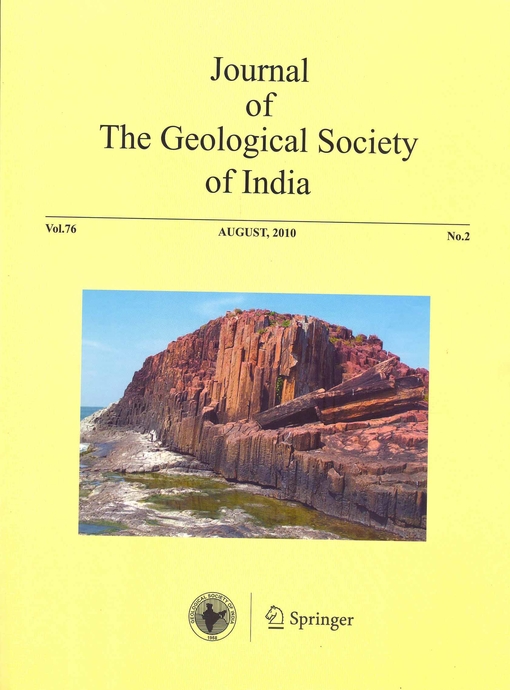Identification of Landslide Slip-Surface and its Shear Strength: A New Application for Shallow Seismic Refraction Method
Keywords:
Seismic, Landslide, Slip-Surface.Abstract
Traditional investigation methods for studying landslide and slope stability is concentrated on studying the present and original geometry of slope, geological cross-section, position of water table and shear strength parameters. It is of prime importance to determine the thickness of slipped ground and the slope of the slip surface. The depth is usually estimated from trial pitting, trenching and drilling boreholes. By using advanced non-invasive geophysical techniques engineers can get a representative picture of hidden subsurface condition with less disruption than using traditional investigation methods like coring, boring and sampling.
In this reconnaissance study, seismic refraction survey using a hammer seismograph was conducted in order to determine the thickness of slip material and dip of the slip surface of a landslide.
The results of seismic refraction surveys showed good correlation with borehole information. The thickness of the sliding material and the dip of the slip surface were well delineated. The results of the survey were then used to estimate the value of the shear strength parameter as a back value analysis technique. This value was then obtained by ring shear apparatus. The difference between the measured and calculated residual shear strength value was 2°.
Downloads
Issue
Section
Downloads
Published
How to Cite
References
AL-DABBAGH, T.H. (1985) A study of residual shear strength of Namrian shale in respect of slopes in North Derbyshire. Unpublished Ph.D. thesis, University of Sheffield.
AL-DABBAGH, T.H. and AL-IZOO, S. (1994) Residual shear strength of clay and marl from Lower Faris (Fat'ha) formation. Al- Rafidin Engineering Jour., v.2(3), pp.104-119.
AL-SAIGH, N.H. (1993) Detection of cavities under a concrete floor using the seismic refraction method. Proceedings of the Hard soil-Soft rocks International Symposium, Athens, Greece, 20-23 Sept., Balkema, Spec. Publ., Amsterdam, pp.893-897.
BISHOP, A.W., GREEN, G.R., GARGA, V.K., ANDERSEN, A. and BROWN, J.D. (1971) A new ring shear apparatus and its application to the measurement of residual strength. Geotechnique, v.21, pp.273-328.
BOGOSLOVSKY, V.A. and OGILVY, A.A. (1977) Geophysical Methods for the investigation of landslides. Geophysics, v.42(3), pp.562-571.
BROMHEAD, E.N. (1979) A simple ring shear apparatus. Ground Engg., v.12, pp.40-44.
BROMHEAD, E.N. and CURTIS, R.D. (1983) A comparison of alternative methods of measuring the residual strength of London clay. Ground Engg., v.18(4), pp.30-40
CRIPPS, J.C. and TAYLOR, R.K. (1987) Engineering characteristics of British over-consolidated clays and mud rocks, Mesozoic deposits. Engineering Geol., v.23, pp.213-253.
CUMMINGS, D. and CLARK, B.R. (1988) Use of seismic refraction and electrical resistivity surveys in landslide investigations. Bull. Assoc. Engg. Geologists, v.25(4), pp.459-464.
DENNESS, B., CONWAY, B.W., MCCANN, D.M. and GRAINGER, P. (1975) Investigation of a coastal landslip at Charmouth, Dorset. Quart. Jour. Engg. Geol, v.18, pp.119-140.
DE VITA, P., AGRELLO, D. and AMBROSINO, F. (2006) Landslide susceptibility assessment in ash-fall pyroclastic deposits surrounding Mount Somma-Vesuvius: Application of geophysical surveys for soil thickness mapping. Jour. Applied Geophys., v.59, pp.126-139.
HOBSON, G.D. and GRANT, A.C. (1964) Tracing buried river valleys in the Kirkland Lake area of Ontario with a hammer seismograph Canadian Mining Jour., April 1964, pp. 79-83.
HUTCHINSON, J.N. (1982) Methods of locating slipsurfaces in landslides. British Geomorphological Research Group, Technical Bulletin, no.30, 30p.
MOORE, R.W. (1952) Geophysical methods adapted to highway engineering problems. Geophysics, v.17, pp.505-530.
MOTA, L. (1954) Determination of dips and depth of geological layers by the seismic refraction method. Geophysics, v.19, pp.242-254.
SKEMPTON, A.W. (1964) Long-term stability of clay slopes. Geotechnique, v.14, pp.77-101.
SKEMPTON, A.W. (1985). Residual strength of clays in landslide folded strata and the laboratory. Geotechnique, v.35(1), pp.3- 18.
SMITH, G. N. (1982) Elements of soil mechanics for civil and mining engineering, 5th ed., London, Granada, 493p.

 N. H. Al-Saigh
N. H. Al-Saigh


